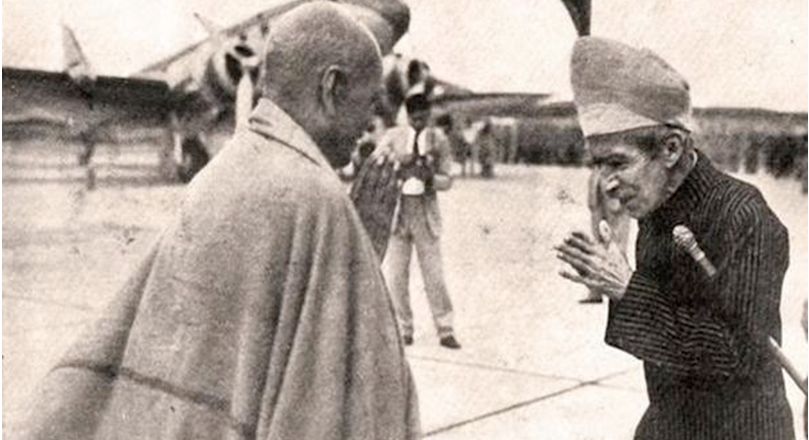In the long illustrious history of civilizational nations like India, there are only a handful of people who find themselves deeply etched in the memory of the people. And even a few are remembered and revered by the millions for their good deeds. One such name is the former Deputy Prime Minister of the country, commonly known as the Iron Man of India, Sardar Vallabh Bhai Patel. While it is out in popular knowledge that Sardar Patel played a pivotal part in assimilating the country into one — merging the hundred’s of princely states into the Union that is India, but not many know about Operation Polo, that brought Hyderabad into the Indian fold. His actions possibly prevented a third Partition or maybe a possible Islamist takeover of India.
Join India, Join Pakistan or remain independent
After India gained independence on August 15, 1947; the Indian Independence Act 1947, passed a few months ago came into being and the policy of subsidiary alliances was abandoned. Hence, the princely states were given three options to decide their future: either accede to India or Pakistan or remain independent.
With efficient leadership and a brilliant strategy, Sardar Patel and VP Menon made the impossible possible, and within a year 562 princely states were ready to merge with India. But the areas which were still not merged with India were principally Kashmir, Junagadh, and Hyderabad. Among them, Hyderabad was not only the largest princely state, but its total geographical area was also way larger than the United Kingdom.
Mir Osman Ali and his dreams of an Islamic world
The Nizam of Hyderabad Mir Osman Ali initially agreed to the ‘standstill agreement’ where the Republic of India would handle the external affairs and defence of Hyderabad but won’t interfere in the internal affairs.
However, Mir Osman was a mere puppet, as real power resided in the hands of Qasim Rizvi, one of the advisors to the Nizam and a powerful leader. He secretly loaned 15 million pounds to Pakistan and raised a semi-private military (Razakars) in the country – thereby violating the agreement. According to sources, the number of Razakars ranged between 20000 and 2 lakhs.
According to these Razakars, either Hyderabad should have been an independent state, where Sharia law would’ve been in force, or it should have been merged with Pakistan. And if one thought Mir Osman was any good samaritan then he/she is sadly mistaken. While the power was in the hands of Rizvi, Mir Osman’s greatest and lifelong ambition was to convert Hyderabad into an independent Islamic State even before Jinnah had conceived his Pakistan project.
Thus, accessing the situation closely, Sardar Patel, who had assimilated the majority of Princely states without any violence or bloodshed suggested that the only route to gain access to Hyderabad was through a military operation.
We need a military operation: Sardar Vallabhbhai Patel
India’s last Viceroy before Independence, Lord Louis Edward Mountbatten wasn’t in favour of using any kind of force and wanted all the issues to be resolved through dialogue, a notion which was also approved by Prime Minister Jawaharlal Nehru. However, Sardar Patel held his ground and disagreed completely. He clarified that the merger of Hyderabad into India is almost impossible without military action.
Eminent officers like Lt. General Rajendra Sinhji Jadeja were appointed as the main commanders for the accession to India. Since Hyderabad had the largest number of polo grounds in the country, this military operation was named Operation Polo.
Operation Polo
The military operations under Operation Polo began on 13 September 1948. Indian forces entered the state at the crack of dawn. The first battle was fought at Naldurg Fort on the Solapur Secunderabad Highway between a defending force of the 1st Hyderabad Infantry and the attacking force of the 7th Brigade.
Using effective tactical strategies and a combination of speed and surprise, Indian forces quickly captured the Naldurg Fort, tamely beating the ‘hired for money’ soldiers of Nizam.
Finally, at 5 pm on 17 September 1948, the Nizam announced a ceasefire. The Nizam had abdicated upon the surrender of Hyderabad and the princely state ceased to exist. Subsequently, the Nizam signed an instrument of accession, joining India.
Major General Jayanto Nath Chaudhuri accepted the surrender of Hyderabad Chief of Army Staff, Major General Syed Ahmed Al Edroos and Hyderabad was officially merged with India. In this battle, more than 2000 Razakars were slain, along with 800 of the Hyderabad State forces. However, to our grief, 32 brave warriors of the Indian Army also embraced martyrdom.
Had it not been for Saradar Patel, these princely states with considerable resources and strategic locations would have gone to Pakistan, giving the terrorist country an edge. Had that happened, the current position of India and Pakistan would have been reversed with Pakistan being the greater power in South Asia.
Tough times require tough actions and Patel was that tough man who had the will and courage to take tough actions required to keep the nation united. Only if the subsequent leaders had the same guile, India would not have lost its significant border areas.
